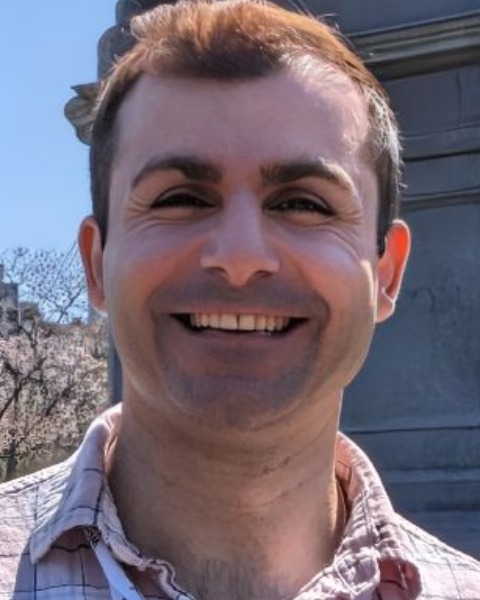Drug Delivery
(L-475) Mucosal Tissue Bioreactor for Native Tissue Culture: Application to Cystic Fibrosis

Maria Hudock (she/her/hers)
MD-PhD Student
Columbia University, United States- KY
Keith Yeager
Research Engineer
Columbia University, United States - OG
Olimpia Gavaudan
Master's Student
Columbia University, United States - MP
Meghan Pinezich
Postdoctoral Scientist
Columbia University, United States - TB
Tyrone Baines III
Undergraduate Student
Morehouse College, United States - JV
Julie Van Hassel
Surgical Postdoc
Columbia University, United States - MD
Mohamed Diane
Surgical Postdoc
Columbia University, United States - PC
Panpan Chen
Postdoc
Columbia University, United States .jpg)
Jiawen Chen, The Doctor of Philosophy (she/her/hers)
Graduate Student
Stevens Institute of Technology
Hoboken, New Jersey, United States
Mohammad Mir, The doctor of philosophy
Graduate Student
Stevens Institute of Technology
Hoboken, New Jersey, United States- AP
Aneri Patel
Graduate Student
Stevens Institute of Technology, United States - JK
Jinho Kim
Assistant Professor
Stevens Institute of Technology
Jersey City, New Jersey, United States - GV
Gordana Vunjak-Novakovic
University Professor
Columbia University, United States
Presenting Author(s)
Co-Author(s)
Last Author(s)
For cystic fibrosis (CF) patients not responding to highly effective modulator therapy (HEMT), little can be done to prevent lifelong, recurrent, drug-resistant infections and decline in lung function. Lung transplant remains the only definitive treatment option. With inadequate supply of donor lungs and the complications associated with immunosuppression, there is an urgent need for better treatment options. Obstacles to therapeutic development include limited pathological fidelity or intensive care requirements of animal models, and the difficulty of recapitulating the thick airway mucus which protects pathogens and hinders drug delivery in in vitro models. To address these obstacles, we are developing a high-fidelity in vitro CF model comprising a modular mucosal tissue bioreactor and bioartificial CF mucus for evaluating both mucus penetration/disruption and tissue-level effects of drug and gene delivery.
Materials and Methods::
An air-liquid interface bioreactor with integrated perfusion and ventilation supports a thin (< 600 μm) slice of mucosa from porcine or human airways. Modular design permits easy maintenance of many bioreactor units in parallel. These bioreactors are designed to be compatible with epifluorescence and light sheet microscopy, bioluminescence, and bioimpedance measurements in a grab-and-go fashion. We are also generating a bioartificial mucus benchmarked to patient sputum in macromolecular composition, rheology, dextran permeability, and microrheology via particle tracking.
Results, Conclusions, and Discussions::
Results demonstrate that isolated mucosal layers remain viable in mucosal tissue bioreactors, as shown by nuclear staining and retained ciliary activity over 7 days. Bioartificial mucus formulations with low macroscopic viscosity nonetheless show significant barrier functions, with up to 68% decrease in mean squared displacement at one second (MSD(1s)) of 100 nm polar probes, and up to 39% decrease in MSD(1s) of 100 nm PEGylated probes. Formulations with higher macroscopic viscosity display lower barrier functions, allowing tunability in this barrier model. Combined with bioartificial mucus, this modular bioreactor enables studies of lung disease etiology and treatment, including the modeling of HEMT-nonresponsive CF, and is particularly well-suited to mutli-channel monitoring of therapeutic delivery and effects. Other lung diseases, including chronic obstructive pulmonary disease (COPD) and idiopathic pulmonary fibrosis (IPF), might also be studied in this platform. This technology will be a steppingstone towards improved treatments of chronic lung disease.
Acknowledgements (Optional): :
References (Optional): :
